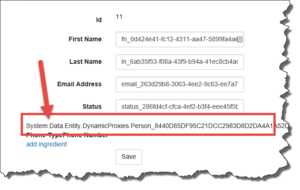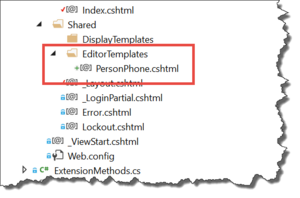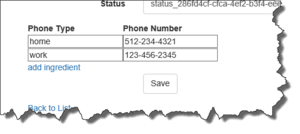Quick fix to a problem that I just hit. I'm writing an application in ASP.NET MVC with Razor and I wanted to use an editor template for a collection on my model. In this case, I'm trying to edit a Person object that has a PersonPhones collection off of it and I wanted to display a custom editor for those phone values.
Here's my person object:
When you use an editor template in ASP.NET MVC, it allows you to create a separate file in your project that contains all the layout and display information for just that property. Once you've defined it, you can drop a call into your *.cshtml file that looks like this "@Html.EditorFor(model => model.PersonPhones)" and the rendering engine will be smart enough to pick up the editor template for that property and output the correct html.
Well, I did that and when I ran the app, I got some really weird text instead of my nicely formatted phone numbers.
"System.Data.Entity.DynamicProxies.Person_8440D85DF95C21DCC2983D8D2DA4A1A52D2C8CBF69D27D46E42A922DC5970F7FSystem.Data.Entity.DynamicProxies.Person_8440D85DF95C21DCC2983D8D2DA4A1A52D2C8CBF69D27D46E42A922DC5970F7F"
What's happening is that the rendering engine doesn't know what to do with the data types that it sees so it just calls ToString() on it and dumps the ToString() value...which it turns out is pretty much gibberish.
So what's going on?
Well, it turns out that I made a tiny little mistake when I created my PersonPhone.cshtml editor template -- I forgot to create a folder called EditorTemplates. When you create an editor template or a display template, you put it inside of a folder that's inside of the Shared folder of the project. Those folders inside of Shared are supposed to be called DisplayTemplates or EditorTemplates. I forgot to create that EditorTemplates folder so my project looked like this with the PersonPhone.cshtml file directly under Shared.
When I created the missing folder and moved the PersonPhone.cshtml editor template file into that folder, then everything worked. Here's how the folder structure is *supposed* to look:
Once that's corrected, then I get my phone numbers displayed the way that I wanted.
So. When creating DisplayTemplates and EditorTemplates, remember that the folder structure matters!
-Ben











